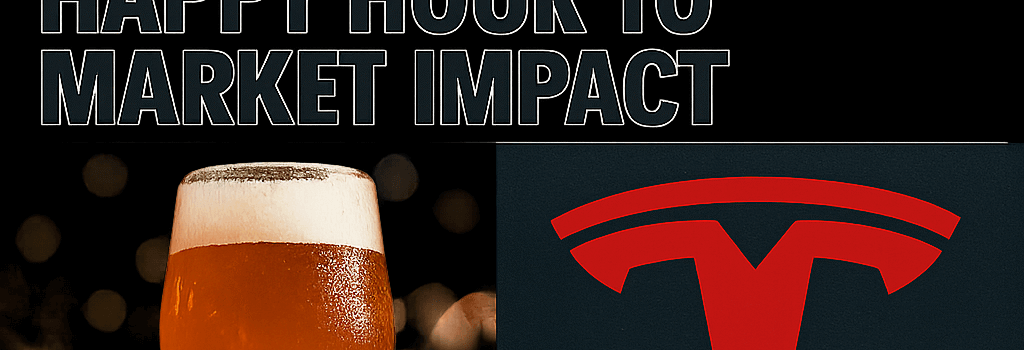Tesla Takedown Campaign: Happy Hour to Market Impact

Origins in Seattle’s Capitol Hill
On a bright April afternoon, roughly 40 climate and labor activists assembled in a side room at Pine Box, a beer-and-pizza bar nestled in Seattle’s Capitol Hill. Instead of a typical organizing session, they tuned into Tesla’s Q1 2025 earnings conference call via a slightly crackling livestream. This marked a departure from traditional climate protests: for the first time, attendees were there to dissect corporate financials rather than slog slogans in the streets.
Emily Johnston, a veteran climate organizer and leader of the local cell known as the Troublemakers, recalls how unusual it felt to cheer at a negative earnings report. Tesla had just reported a 71% year-over-year drop in net income and missed revenue forecasts by over $2 billion—an uncharacteristic stumble for the world’s most highly valued automaker.
From Bluesky Post to Nationwide Movement
The grassroots momentum began with a February post on Bluesky by disinformation researcher Joan Donovan. She urged supporters to “bang pots and pans on the sidewalks in front of Tesla dealerships.” Although the post garnered fewer than 200 likes, it resonated with actor-producer Alex Winter, who built a central website in 12 hours. Within days, thousands registered for the nascent “#TeslaTakedown.”
Local chapters sprang up in cities from New York to Austin, coordinating weekly actions outside showrooms and charging stations. Volunteers, many first-time organizers such as federal employee “Mike” in San Francisco, shared digital flyers and GIS-mapped Tesla locations. The site’s backend—hosted on a leading cloud computing platform—enabled real-time event updates and volunteer coordination.
Elon Musk’s Reaction and Market Ripples
“Now, the protests you’ll see out there, they’re very organized, they’re paid for,” Elon Musk quipped on the Q1 call, attributing the rallies to opponents who had benefited from federal spending.
Investors’ immediate reaction was mixed. Tesla’s stock, which peaked in late 2024, dropped by 33% amid concerns over an aging vehicle lineup, lackluster Cybertruck deliveries, and persistent delays in its Full Self-Driving (FSD) suite. Yet by late spring, shares regained ground as Musk shifted focus away from his federal advisory role and teased a robotaxi launch, banking on Tesla’s advanced Dojo supercomputing cluster to power AI-driven rideshare services.
Technical and Market Fundamentals
Battery and Powertrain
- 2170 vs. 4680 cells: Tesla still deploys both form factors, balancing energy density (up to 300 Wh/kg) against manufacturing complexity.
- Vehicle Range: Long Range Model 3 now achieves 358 miles on a single charge under EPA testing.
- Gigafactory Output: Recent optimizations at Nevada and Shanghai facilities raised annual cell production capacity by 20 GWh.
AI, Autonomy, and Dojo Supercomputer
Despite repeated promises, Tesla’s FSD Beta remains limited to level 2 autonomy. Industry experts like Chris Urmson, CEO of Aurora, note that Tesla’s camera-only vision system requires neural network improvements and rigorous edge-case validation. Meanwhile, the Dojo supercomputer, boasting an estimated 7 exaflops of training capacity, aims to accelerate model convergence, yet its public benchmarks remain undisclosed.
Legal and Policy Implications
The Trump administration’s classification of property damage at Tesla sites as domestic terrorism marked an unprecedented step. Lawyers like Katherine Gallagher of the Electronic Frontier Foundation warn that such charges risk conflating peaceful assembly with violent acts, granting broader surveillance powers and harsher sentences—up to 20 years in federal prison.
Deep Dive: Digital Activism Infrastructure
The #TeslaTakedown website, built on a serverless architecture, leverages Infrastructure as Code (Terraform) and CI/CD pipelines for rapid updates. Real-time chat via integrated WebSocket channels and encrypted email newsletters (via Mailchimp with 2048-bit TLS) allowed organizers to scale from a local Seattle demo to over 500 protests.
Expert Perspectives
- Wall Street Analyst View: Morgan Stanley’s Adam Jonas cautions that activism can pressure corporate governance but is unlikely to derail Tesla’s long-term battery cost curve.
- Automotive Engineer Insight: Kate Downing of SAE International highlights that overemphasis on autonomy marketing may erode consumer trust in EV technology safety.
- Climate Policy Scholar: Dr. Leila Rodriguez of Stanford University argues that movements like Tesla Takedown reflect broader public demand for accountability in the clean tech transition.
Next Steps and Outlook
Those behind the Takedown are now lobbying municipal pension funds to divest from Tesla stock; Lehigh County, PA, was the first to agree. Simultaneously, activists plan to collaborate with Indivisible chapters on policy campaigns targeting electric vehicle incentives, aiming to couple climate goals with corporate responsibility.
Whether Tesla’s stock volatility continues or stabilizes, the campaign underscores a pivotal shift: stakeholders no longer accept unbridled corporate influence, demanding transparent governance as the auto industry electrifies.